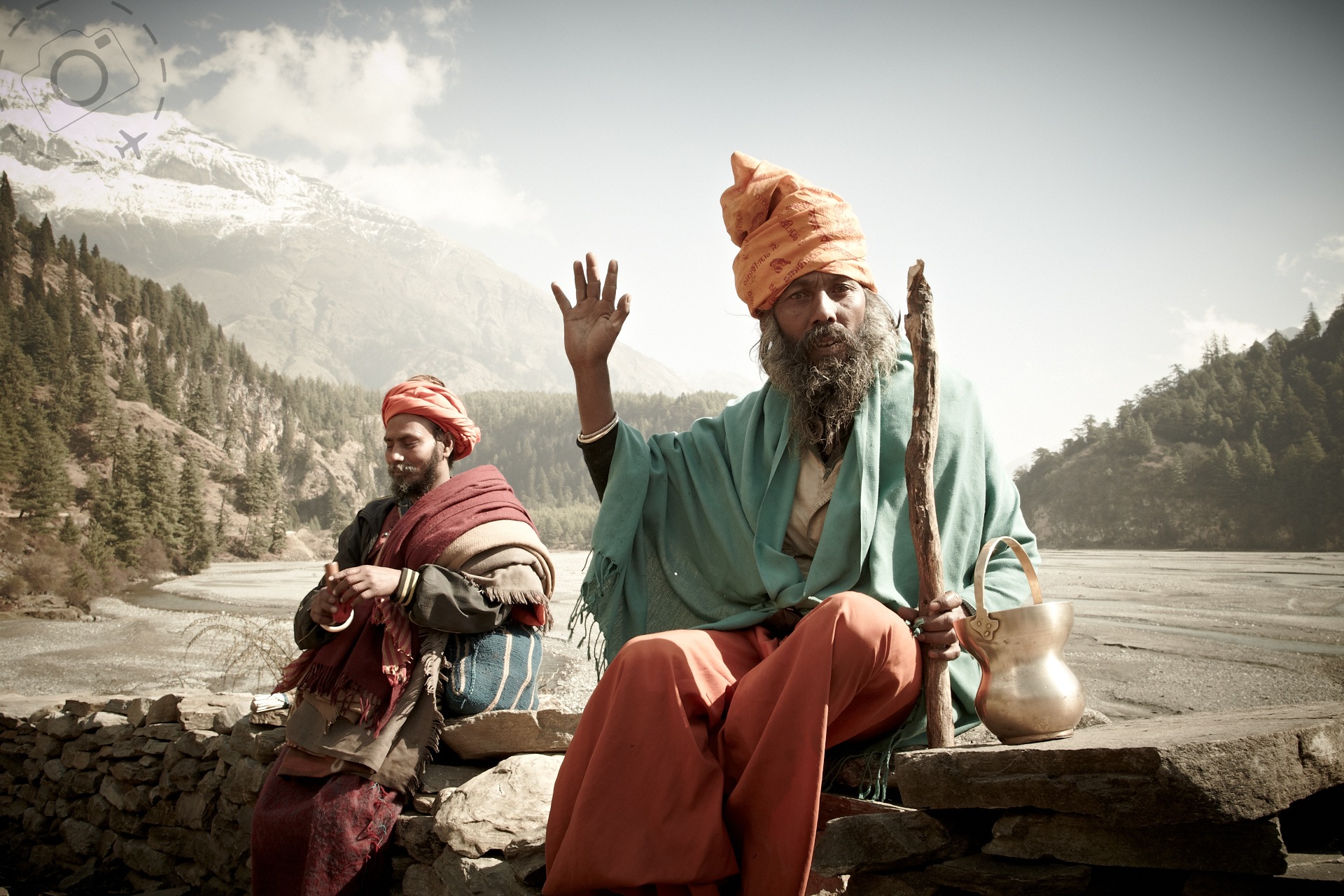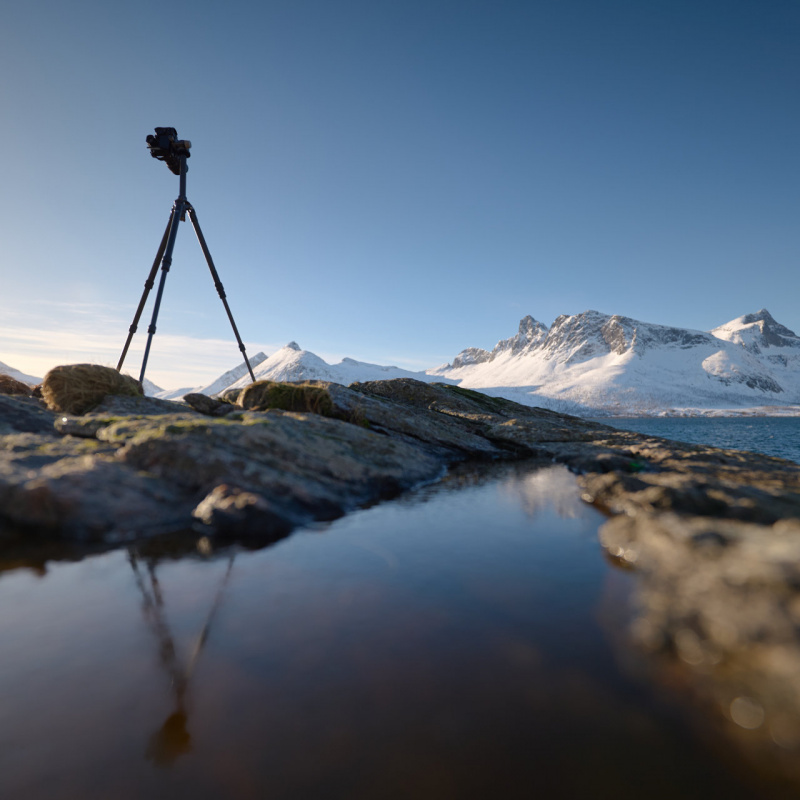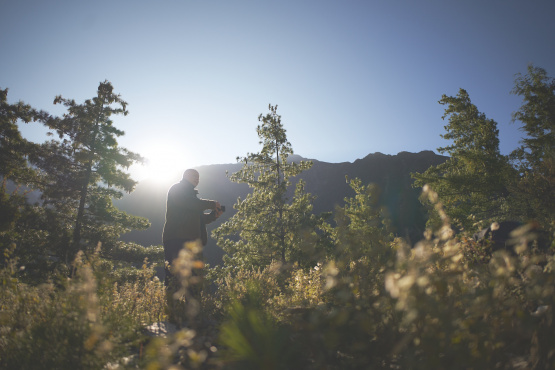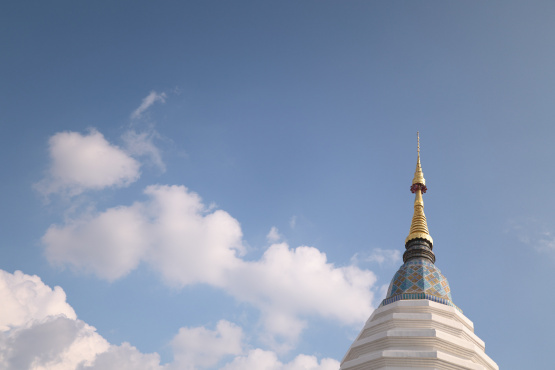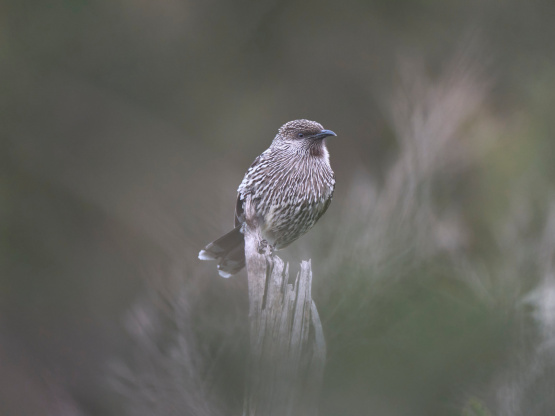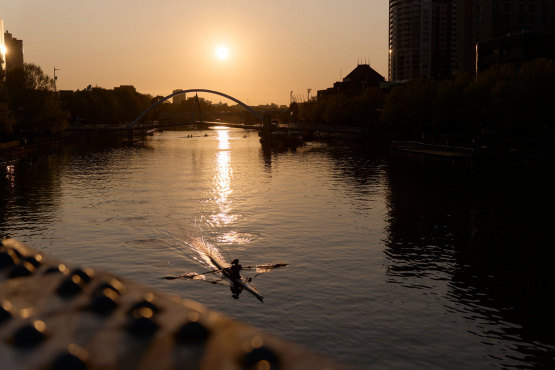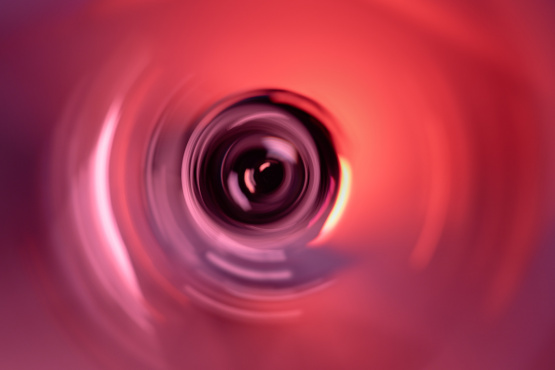In the dim light before dawn I walked up the back steps to Swayambunath, the Monkey Temple, on the edge of Kathmandu. I come here for the sunrise, to see an orange ball of fire wrestle with the haze and pollution of Nepal’s biggest city. The rising sun is a curiosity really, but the people who visit Swayambunath each morning to offer prayers are absolute treasures. They light butter lamps, burn incense sticks, prostrate themselves at the altars of gods, seek blessings from holy men and monks, and sing chants of joy that float across the suburbs below. It’s a joyous place with or without a camera.
The light changes rapidly after dawn and offers new inspiration by the minute. Swayambunath is a peaceful and calm treasure in Kathmandu that rewards photographers as they struggle to master the more subtle challenges of portrait and street photography. It’s also a great place to practice the gentle art of engaging with your subjects.
Telephoto Stalking
When I first went solo with my photography I would shoot a lot of tour brochures, and as such got to meet more than a few tour guides who held an interest in photography as well. Often they’d pull out their camera and start showing me their work, with pride and eagerness to share their talent. One fellow had bought a 70-200mm lens and wanted to show me a series of shots he took of a vendor in Thailand. He was standing across the street when he took the shots, peering in from a distance with the longest part of his telephoto. The images were mostly just her head, sometimes a little of the shoulders too, and often not even that.
My guide thought the images were beautiful. I thought they were creepy.
Put yourself in that woman’s shoes. If she did know about the photographer with a big lens sneaking photos from across the street, would she be flattered or terrified? It was difficult to fully empathise with her experience, because the photos I saw revealed so little of her spirit anyway. She was anonymous and lost in those shots. The images were one dimensional in the extreme. They could have been taken anywhere as the long lens allows little room to bring the location into compositions. There is no composition in fact, just focus and grab.
Telephoto portraits remove any hint of connection between the photographer and subject. There’s no story in such images. No layers, no context and no substance.
My guide wasn’t thrilled with my response to his pictures. He defended his shots by suggesting that if he had asked first then the moment would have passed, that it would be gone forever. If you’re standing across the road stalking a woman in Thailand then it’s quite possible there is no ‘moment’ that exists outside of your own mind.
There is a better way, one that leads to real moments and much more connected photography.
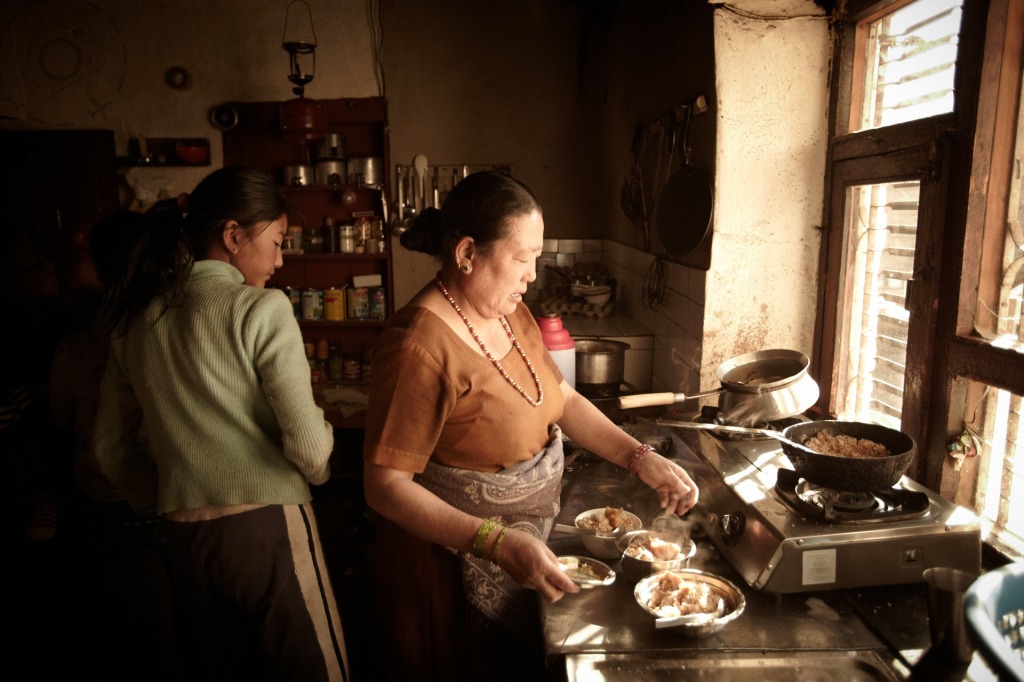
(Kitchen Didi)
Permission
Many people think seeking permission to photograph is ruining the moment, and ruining the image they imagine in their minds. Firstly, it’s important to note that your desire to photography does not over ride someone else’s right to privacy. Portrait photography requires the most basic level of respect for other humans and if that’s too difficult for you to manage then maybe you need to focus more on landscapes instead. If you think it would be ‘awkward’ to surreptitiously sneak photos of strangers in your own neighbourhood, then try to apply those same rules of respect to the streets of Nepal, or Thailand, or Bhutan, or anywhere else.
If you’re in a rush and just want to roll through a market or street scene at maximum pace while grabbing shots, and feel you don’t have time to stop and chat to people, then don’t expect to achieve any depth or joy from your photography. You get out what you put in.
Engagement is the essential ingredient here, and stopping to ask permission from people is the BEGINNING of engagement, not the end of a moment. Spend a little while either talking to them, or sharing a few photos on the back of your screen. Let them in on your art and photography. The more you engage the less they have to fear from you, and the more they can be themselves. Connecting with people is the first step, and the real photography comes later.
Once you share a few photos and have a chat, or exchange of hand gestures, most people will happily ignore you. And that’s the best part. They will return to their business, they will go back to selling produce or boiling masala chai. And that’s when your most revealing photography will be possible. At this point you have consent to be present and consent to be photographing. You are no longer a weirdo with a camera, and the more they ignore you the more intimate the images you can capture.
As an intimate part of the scene you are capturing, you now have full flexibility over your style of connection with the lens. You can still capture moments with subjects looking directly at the lens, offering a smile, or moments when they are oblivious of the camera. You can also shoot bits of texture deep within the scene, such as close-ups of hands at work. You see so much more by being up close, and hence can photograph so much more.
Whether you aim for direct portraits or a ‘fly on the wall’ moment, your subject is less anxious or less conscious of the camera itself. They are aware mostly of you, not the camera. This places you in a powerful position for editorial and journalistic photography.
It takes time. It takes effort. It takes kindness. There is work involved and it’s not a “hit and run” scenario. If you treat people with respect and share what you’re doing, you give them a chance to share a little of themselves in return. It doesn’t mean everyone will respond in kind, because some people simply don’t want to be in front of a camera at all. But you have opened the door to some really lovely moments happening. Real moments. Moments that you will be in the ideal position to capture through a wide lens because you’re up close and immersed in the scene, so you’re capturing the context and story of that person as well.
A portrait is not just somebody’s face, it’s somebody’s life.

(Local Bus)
Smile and Smile
When I talk about consent to photography I am aware that language barriers can prevent you from simply explaining what you’re doing. This doesn’t mean you can’t gain consent however. The key is to make it very clear what you’re doing, not to hide it or be secretive, and wait for a positive response from your subject. This is not merely ‘tacit’ consent, you are waiting for a ‘yes’ even in the absence of language skills.
Another of my favourite places to shoot in Kathmandu is Boudanath, the Tibetan stupa in a part of town where exiles and refugees escaped the Chinese occupation of the mid 20th century. At any time of day there are people walking and praying around the stupa and prayer wheels, but late in the afternoon the crowds grow and the light turns golden. If you stand in one place you will see the same faces go past over and over, and they see you too. I watch them and look for the smiles.
If you start with a smile, and offer it to strangers, then it’s amazing how often they will return in kind. I stand in plain sight holding a camera, down low at my waist and aimed at the ground. I’m not hiding it. I want them to see my camera and be aware why I am there. I might wave my camera in the air so they know what I’m thinking. If they smile again, then it’s a good sign. If an old lady looks away in fear of the camera, then that’s a bad sign. I act accordingly.
You need a measure of patience to do this. You watch them walk past over and over, eager to capture but balancing that with showing respect. Only when you get a generous smile can you be sure. Once you bring the camera up to your face to compose you may get a different reaction again. Sometimes they smile even more, sometimes they decide “oh no thanks”. You have to look for their response and then decide. It all begins with your smile.
The only worse than shooting subjects from across the road with a big lens is shooting subjects up close with a big lens. And I see plenty of that on my travels too. I see travellers with a 24-105mm lens marching through markets with singular focus on their photography, unaware of how their big lens feels to people when it’s shoved in their face. I watch old ladies recoil as some tactless westerner with a zoom lens for a head walks directly at them. It’s intimidating and just plain rude.
This is why I try to approach people with the camera down low with lens definitively pointed away. I want my subjects to see me first, and the camera second. I want them to know that I see them as a person, not just a subject. If the first thing someone sees is your lens aimed at them, it’s quite awful and impersonal and it’s the opposite of engaging. It’s intrusive with an element of aggression.
Make sure the first thing your subject sees is your smile, not your lens.
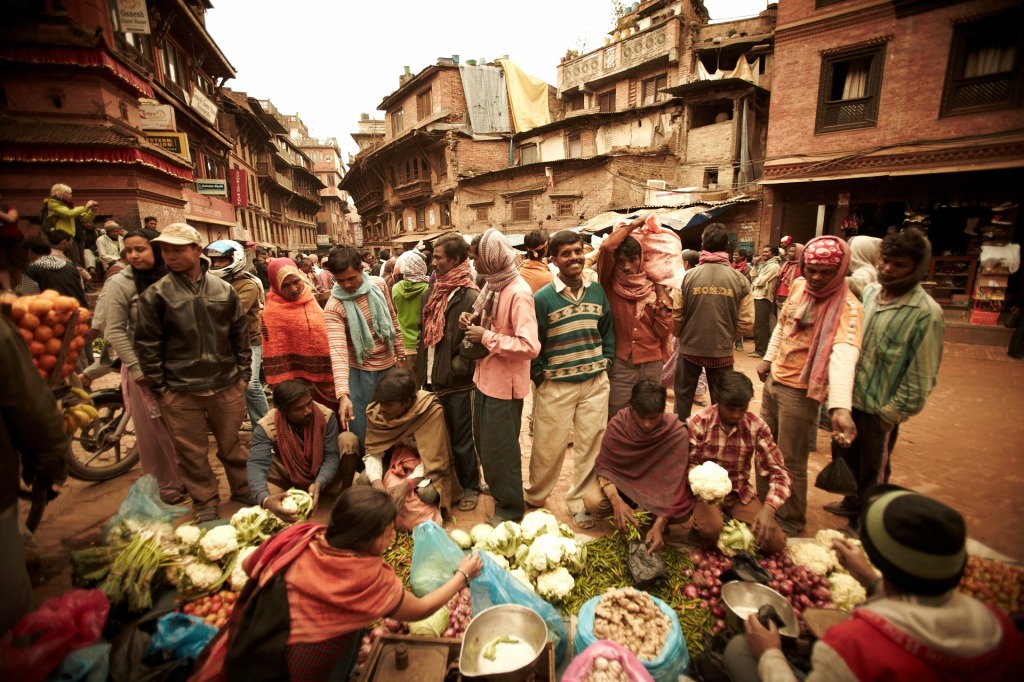
(Market Hour)
Monk Advice
Back in Kathmandu, waiting for dawn to appear at Swayambunath, I once had a very unexpected experience. A little tea shop along the back lanes of the temple had a sign out front, and the door was half open. There was barely enough light to capture the sign, but it held charm for me. As I took the photo I heard a voice from inside. It was dark, and I couldn’t see any people, just the voice.
I stepped inside and let my eyes adjust, and saw a monk sitting with his tea. I heard him more clearly as he repeated his request, “please don’t take my photo”. I sat with him and had a chat, explaining what I was doing and showed him the photos. He went on to explain to me, however, a list of ways in which people ‘steal’ his photograph, sneakily and as if he doesn’t realise what they were doing. He described so many techniques that I can’t even remember them all now. One of them is when people pretend to take a photo of a sign and then swing the camera to one side and photograph him instead.
What impressed me was the fact that he knew exactly what was happening. All these people employing sneaky tricks were not fooling anyone. I took that in slowly and just listened to him talk. All these years I had been advocating to ask permission first, and here was a monk telling me what it feels like from the other side. I was moved.
The monk added, “If people would simply ask me, I would gladly say yes. But they do not ask, they just steal.”
And that is why we ask permission first.
I know the feeling you have when you fear a perfect moment is about to disappear, forever, and you just want to capture it. I know the pressure you put on yourself to get the shot. I try to counter that self-driven pressure with the fundamental attitude when travelling of “don’t try to get every shot, try to get your best shots instead.” Letting go of unreasonable expectations will allow you to enjoy your travel more, and the photography as well.
As your skills with photography grow so will your confidence in being patient and kind. You will not have to worry about missing a moment, because instead you will be creating a thousand new ones. Practice patience, share your smile, and leave plenty of time to “go slow and get closer”.
Enjoy some photo essays from Nepal featuring Swaymbunath, and places beyond:
Newari People
ewenbell.com/editorial/Newari+Villages
Kalimati Market
ewenbell.com/editorial/Market+Road
The Low Roads
ewenbell.com/editorial/The+Low+Road
The High Roads
ewenbell.com/editorial/Photographers+and+Mountains
Muktinath
ewenbell.com/editorial/Pilgrims+Trail
Sadus
ewenbell.com/editorial/Smoke+and+Sadus
Jomsom
ewenbell.com/editorial/Below+Jomsom
Mustang
ewenbell.com/editorial/Lower+Mustang

(Boudanath)
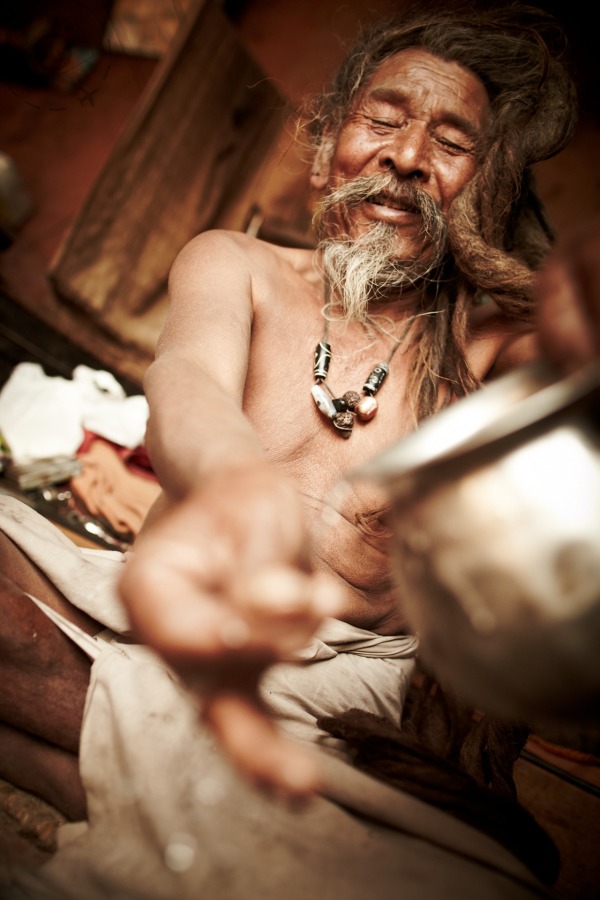
(Pasupathinath)

(Namaste)
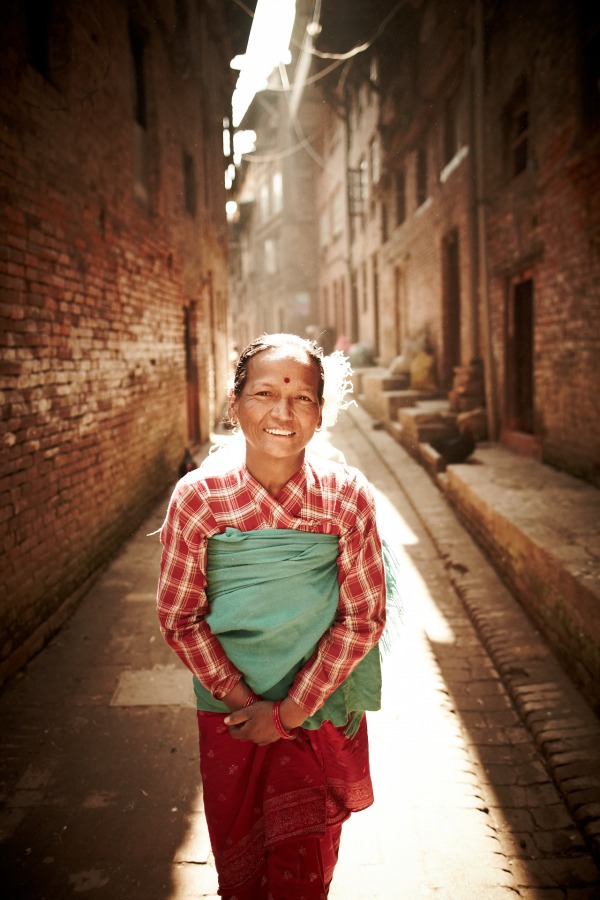
(Street Smiles)
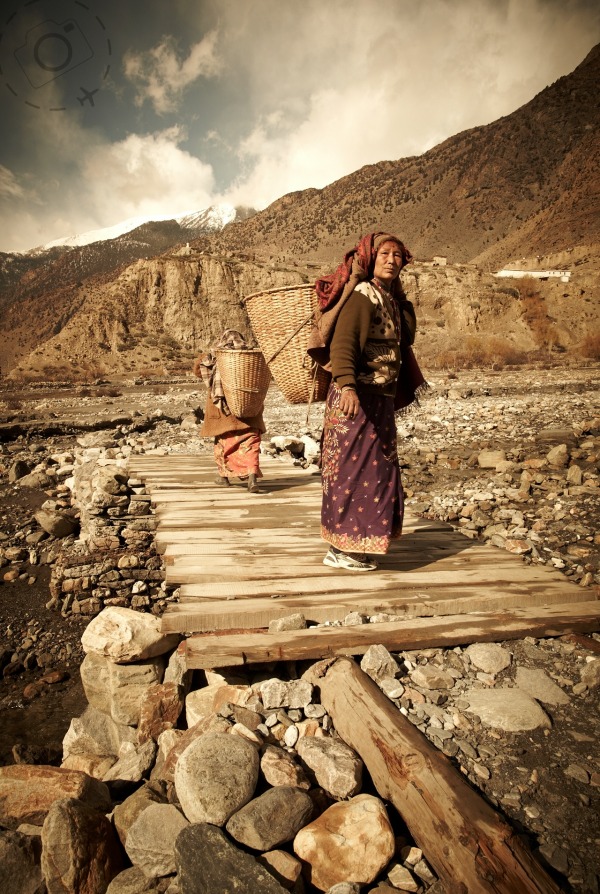
(Annapurna Trail)

Keep Reading
Join Ewen's newsletter for monthly updates on new photography articles and tour offers...Subscribe Here

